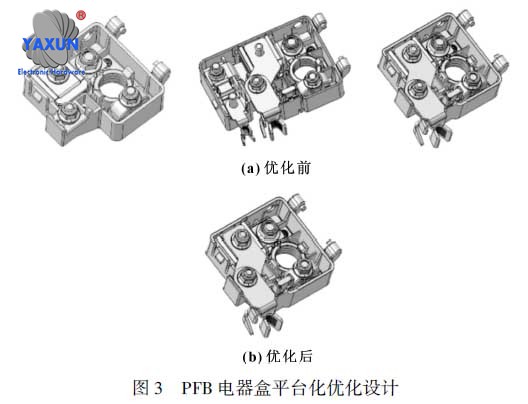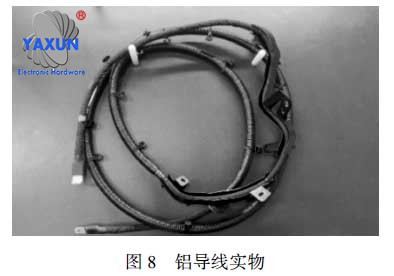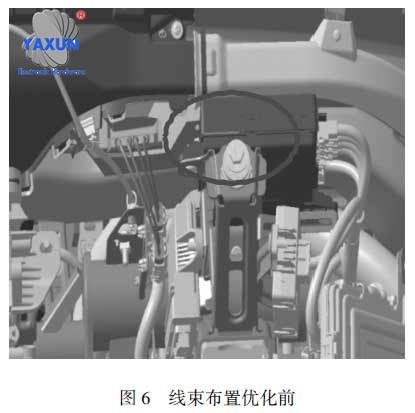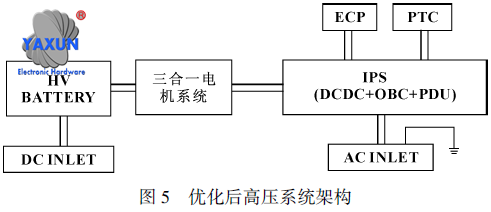From the previous article “Talk about the proportion of wire harness material cost” we have learned that the cost of wire harness materials accounts for about 65% of the total cost of the wire harness. In the design stage, wire harness costs can be reduced mainly by optimizing wire harness design. In the later stage, the cost of wire harnesses will be reduced mainly by optimizing the manufacturing process of wire harness suppliers and comparing prices.
Studies have shown that 80% of product costs are determined during the design stage. Επομένως, many companies have invested a lot of energy in paying attention to this 80% established cost, and are exploring further cost reduction methods before the R&D products enter mass production. Επομένως, it is of great significance to conduct cost reduction research and application in the automotive wiring harness design stage and further optimize the wiring harness cost.
Wire harness engineer details: platform and standardized design, architecture optimization and controller integration, wire harness layout optimization, wire harness technology innovation, one-to-many materials and localization. As well as VAVE’s 6 cost reduction methods in the wire harness design stage. And applied in vehicle development projects, the cost reduction effect is significant.

Optimized design of PFB electrical box
Platform and standardized design
In order to reduce product costs and shorten development cycles, platform design has become one of the important cost reduction measures for automobile companies. Through wire harness connection, the wire harness interface and hole position definition platform of electrical appliances can be promoted. Continuously promote the platformization of wire harness materials and design solutions, unify wire harness components and simplify the structure, which improves the standardization of design and reduces the arbitrariness of engineers’ design. Different models should share secondary components of wiring harnesses as much as possible. Establish a database of wire harness components and try to use existing platform components to avoid the development of special new components. The unification of wire harness components can concentrate demand, which is conducive to the procurement of components and increases bargaining chips. After continuous platform optimization design, the commonality rate of the front cabin electrical box, dashboard electrical box, wiring harness connectors and wiring harness accessories has reached 100%. In terms of parts and connectors, there are a total of 312 categories of parts and components, 208 of which are platform-based, and the platform-based rate increased to 67%.
Before optimization, there were a total of 5 types of PFB electrical boxes, including 4 tiled types and 1 side-mounted type. After optimization, there were only 3 types. The following is a case of platform design optimization of PFB electrical box for a certain platform project. The three types of PFB electrical boxes are merged and optimized into one type as shown in Figure 3.

Automotive aluminum wire harness production
Architecture optimization and controller integration
Continuous optimization of automobile architecture can not only improve the performance of automobiles, but also reduce production costs. Promoting electrical architecture optimization can effectively simplify the wiring harness structure. The greater the number of electrical components, the longer the harness. Promoting the integration of electrical devices can reduce the number of connectors and wire harness branches. Taking an electric vehicle project as an example, the high-voltage electrical architecture has been optimized, and the cost and quality of high-voltage wiring harnesses have been significantly reduced. After the automobile architecture is optimized, the length of the high-voltage wire harness is reduced from 22 m to 9 m, the mass is reduced from 13.5 kg to 4.8 kg, and the cost of the high-voltage wire harness is significantly reduced by 41%, as shown in Figures 4 and 5.

Automotive wiring harness layout optimization
Wire harness layout optimization
Due to the application of a large number of electrical components and the small wiring space in the car, the difficulty of wiring harness layout continues to increase. In the design and layout of automobile wiring harnesses, the wiring harness should be safe and stable, save materials, save space, and be easy to assemble and maintain. Further improve the uniformity of electrical appliance layout, reduce the types of fixed materials, and reduce and simplify the use of protective panels. Avoiding heat sources and reducing the application of thermal insulation materials can optimize the wiring harness direction and layout. Optimizing the layout of electrical components can shorten and simplify the wiring harness path. Figures 6 and 7 show the before and after optimization of the wiring harness layout for a certain project. A The layout position of the components remains unchanged, and the body is rotated 180°. The antenna interface connector is changed from two 2PIN connectors to four 1PIN connectors, of which three 1PIN connectors are directly connected to component A, and the other one is connected to the wiring harness. The wiring harness is reduced by 3 small wire materials for the 3 antenna loops connected to component A, the length is about 1m, and the wiring harness feeder is shortened. The total cost reduction for this layout optimization is approximately $4.6.
Innovation in wiring harness technology
By introducing new technologies in wire harness materials, design and processes, wire harnesses can be lightweight and cost reduced. For example, by applying relay and fuse miniaturization technology, the total cost of the electrical box is reduced by about 29.5 yuan. For another example, under the same impedance conditions, aluminum conductors have smaller mass than copper conductors (see Table 1). By choosing aluminum wires and fine-diameter wires with smaller outer diameters and lighter weight, the weight and cost of automotive wiring harnesses can be reduced. The cost of wires accounts for a large proportion of the cost of automotive wiring harnesses, and 0.13 mm2 alloy wires or even lower small square wires are promoted. The application of 0.13 mm2 alloy wires is of great significance to lightweighting the entire vehicle. In a certain project, the 48 V battery wiring harness used 35 mm2 copper wires before optimization, but replaced them with 50 mm2 aluminum wires after optimization. The length is about 4 m, and the weight is reduced by 224 g/m. A total weight reduction of 896 g was achieved, and the cost was reduced by about 30 yuan, as shown in Figure 8.

Automotive high-voltage wiring harness architecture design
Material one-to-many and localization
The previous technical solution corresponds to one type of second- and third-level materials, and has been transformed into a one-to-many model of the same material, providing a “selection resource library” to first-level suppliers. Foreign-funded wire harness factories and local wire harness factories select low-cost materials based on their own procurement systems to enhance the bargaining power of wire harness suppliers and improve the stability of the supply chain. One-to-many solutions such as ground terminals, heat shrink tubes, fuses, corrugated tubes and ordinary wires are already being implemented. Taking the cloth-based cuffs of a certain project as an example, cloth-based cuffs with the same diameter can be selected and interchanged among three different brands, as shown in Table 2. Increasing the localization rate of secondary and tertiary materials and reducing material costs have become the main cost reduction measures for many parts and components. As the intelligence level of domestic connectors continues to increase, domestic connector manufacturers continue to innovate technology, and the quality of domestic connectors is getting better and better. Because imported connectors are generally expensive and have long delivery cycles, domestic connector brands have received more attention. While ensuring quality, the wiring harnesses of many vehicle model projects are using domestic connectors to replace some foreign-owned connectors, reducing wiring harness material costs and improving supply chain supply stability. Some connectors and accessories in a project are being replaced by domestic brands such as Hulian and Aohai, as shown in Table 3.
VAVE reduces costs
Στο παρόν, automobile companies are becoming more and more aware of VAVE cost reduction. VAVE cost reduction activities can effectively reduce wiring harness costs and improve the cost-effectiveness of products. Since it is more difficult and costly to implement VAVE after mass production, more attention is now paid to the application of VAVE in the design stage. Στο παρόν, the mechanism of regular meetings of the project team is fully utilized, and all relevant departments are fully involved in VAVE activities. Let the relevant engineers in each department know the specific measures and content of the VAVE plan, and actively cooperate with the promotion and implementation of effective wire harness proposals. The proposal and implementation of wire harness VAVE are also inseparable from the active participation and cooperation of wire harness suppliers. The wire harness design department regularly holds regular project meetings with wire harness suppliers to exchange VAVE solutions and follow up on progress, effectively promoting the implementation of the VAVE solution.
The wiring harness design department developed a VAVE record sheet to ensure that the VAVE plan is developed flatly. For each project, the project’s own VAVEcheck list is compiled based on the VAVE record table. The drawings of each valve are reviewed according to the VAVE check list. There are a total of 12 types of optimization types in the VAVE table. Taking a certain vehicle model as an example, through continuous optimization of VAVE in the design stage, the cost of the vehicle wiring harness materials has been reduced by about 11%. Taking the body wiring harness and ceiling wiring harness of this model as an example, the original wiring harness solution before VAVE optimization separated the ceiling wiring harness from the body wiring harness and connected them inline through two pairs of wiring harnesses to form two independent wiring harnesses. Separate management and separate assembly of components is not the optimal design solution from the perspective of cost and quality. Under the existing layout conditions, after VAVE analysis and comprehensive consideration of all aspects, the ceiling wiring harness can be integrated into the body wiring harness. After integrating the ceilingless wiring harness components, you can manage one less component and reduce tooling costs. After merging the ceiling wire harness to the body wire harness after VAVE, there is no ceiling wire harness as shown in Figure 9 and Figure 10. Through VAVE optimization, the cost is reduced by $3 and the mass is reduced by 0. 1 kg/unit. After the tooling is merged, the tooling cost is reduced by approximately $6,000.
 English
English العربية
العربية Български
Български 中文(漢字)
中文(漢字) Čeština
Čeština Dansk
Dansk Eesti keel
Eesti keel Suomi
Suomi Français
Français Deutsch
Deutsch Ελληνικά
Ελληνικά עברית
עברית Magyar
Magyar Bahasa Indonesia
Bahasa Indonesia Italiano
Italiano 日本語
日本語 한국어
한국어 Latīna
Latīna Latviešu valoda
Latviešu valoda Lëtzebuergesch
Lëtzebuergesch Polski
Polski Português
Português Română
Română Русский
Русский Slovenščina
Slovenščina Español
Español Svenska
Svenska ภาษาไทย
ภาษาไทย Tiếng Việt
Tiếng Việt
